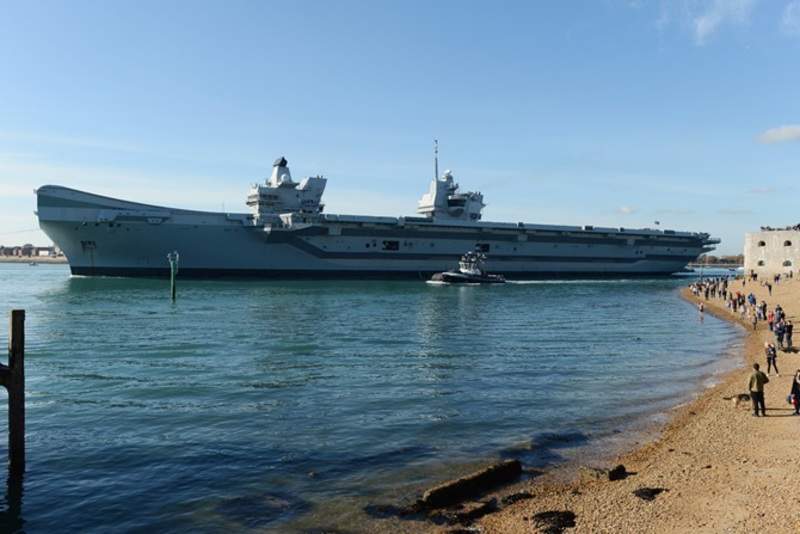
The British Royal Navy’s Queen Elizabeth-class aircraft carrier HMS Queen Elizabeth has sailed from Portsmouth Naval Base to commence its next set of sea trials.
The sea trials are being carried out in order to evaluate the capabilities of the £3bn navy ship.
HMS Queen Elizabeth originally arrived at Portsmouth naval base in August, where it underwent a planned two-month maintenance period.
Portsmouth Naval Base captain Bill Oliphant said: “This period at sea will mark an extremely significant milestone in the life of the ship, leading towards her acceptance into the Royal Navy at her commissioning later this year, back in her home port of Portsmouth.”
The 65,000t Queen Elizabeth-class aircraft carrier is expected to be at sea for the next month and is currently scheduled to be delivered to the Royal Navy by the end of this year.
The vessel previously conducted its first phase of sea trials earlier this year, which demonstrated its platform stability and manoeuvrability.
HMS Queen Elizabeth is claimed to be the biggest and most advanced warship to have ever been constructed for the Royal Navy.
It can accommodate up to 1,600 personnel, including a full air crew, while offering space for embarked personnel such as Royal Marines.
The second vessel of the Queen Elizabeth-class, the future HMS Prince of Wales, is currently in its final phases of construction in Rosyth Dockyard and is expected to be floated out of the dock in the second quarter of next year.
Shipyards based in six cities across the country have been involved in the construction of various sections of the Royal Navy carriers.



